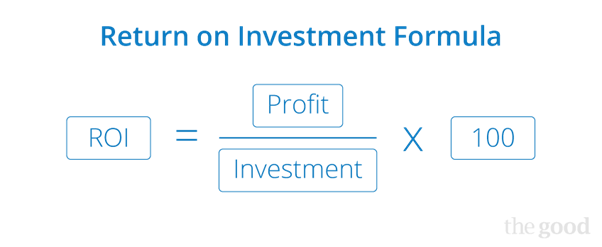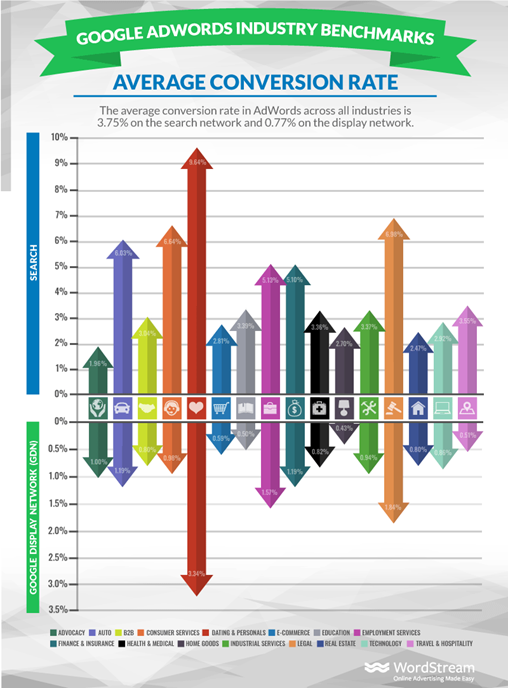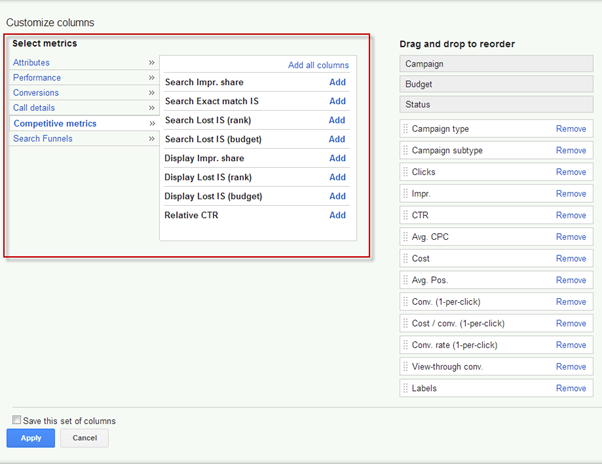When it comes to Pay Per Click advertising, there are countless numbers and metrics about your marketing campaign. With so many statistics to look at, you might get confused about which PPC metrics to focus on the most.
In fact, most organizations don’t realize the importance of monitoring a few key metrics in order to their PPC campaign successful.
They keep an eye on other complicated factors to measure the results of their PPC marketing campaigns, keeping them away from identifying a lot of the data that matter most.
Of course, tracking performance is vital for every marketing strategy. but for paid advertisements, it matters a lot because you spend a significant amount of money, and expect better results as compared to the other marketing methods.
If you are not able to get the results you desire you will not only lose your time and effort but also have to face financial loss. To overcome these problems, you must track all the essential PPC metrics, which will help you in monitoring every penny spent.
Furthermore, if you are a learner and want an in-depth knowledge about Pay Per Click campaigning, take up a PPC training course that will boost your learnings as well as skills, making you aware of PPC marketing strategies and techniques to start a successful campaign.
Here is the list of all the essential PPC metric you need to start monitoring:
- Click Through Rate (CTR)
In order to know whether your advertisement is working or it, you need to observe the number of clicks it is getting.
It is the ratio of the total number of clicks to the number of given impressions. For example, if you have 1000 impressions and the number of clicks on your ad is 30, then your click-through rate or CTR is 3 percent.

The click-through rate is one of the most important PPC metrics which uses the combination if impressions and clicks.
In 2018, the average click-through rate on Adwords across all industries was said to be 3.17.
Using this metric, you can know if your given advertisement is working or maybe you need to create a new one.
- Cost Per Click (CPC)
Another essential metric you need to focus while managing a PPC campaign is the cost per click. This number is not fixed and will continuously change throughout your marketing campaign.
The cost per click also increases if you have too many competitors who are targeting the same group of audience.
Image source: theonlineadvertisingguide
If the cost per click is continuously increasing, then it means that more advertisers are targetting the same set of keywords. Similarly, if the number decreases, then advertisers are slowly losing interest in the keywords.
There is not a specific benchmark to measure the effectiveness of cost per click although it helps you to maintain your budget accordingly.
- Quality score
Quality score is a ranking developed by Google Adwords to measure how useful your keyword and advertisement is to the audience search queries.
Image Source – WordStream
The advertising network calculates the quality score by assessing several factors. If your ad has a higher quality score, then it will have lower cost-per-clicks and a better ad position.
A quality score above seven is considered as good which means you have to pay less for each click.
If you have created a new Adwords campaign, then it’s essential to monitor your quality score. It helps in adjusting your budget and campaign accordingly so that you don’t have to spend unnecessary money. In fact, more than 40 percent of the advertisers have a lower budget to spend on their PPC campaigns.
- Cost per conversion
Cost Per Conversion is defined as price every advertiser pay for each sale or customer they acquire.
It is calculated by dividing the number of views of the advertisement to the number of successful conversions. It helps in understanding if the marketing campaign is profitable or not.
Image Source – theonlineadvertisingguide
Depending upon your profits, it provides an estimation of whether your conversion is good or not. If you are making just $10 and spending $20 for each conversion, then you might think of making changes in your campaign.
It’s important to monitor your cost per conversion to find out which keywords are performing well and which are not valuable.
- Return on ad spend
The return on Ad spend, measure all the expense related to your pay per click campaigns. It includes everything from tools fees, marketer salary, and others.
A marketing campaign might look profitable at first, but after adding all the expense, it might not be as valuable as before.
Image Source – thegood
This metric gives you a rough idea of where you should be spending your money. You should also make a trial campaign, and if it is profitable for you, then you should look for ways to scale it up.
If you are not able to get the desired results, then look for other ways to get traffic and sales. If you want to analyze your data across ad networks, use a product like AdStage Report.
- Conversion rate
Conversion Rate is calculated by the total number of conversions by the total clicks of your marketing campaign. For example, the conversion rate is 10 percent when you get 20 conversions from 2000 clicks.

You can take the help of the conversion tracking metric in your Adwords account to make wise advertising decisions.
Image Source – WordStream
By using the conversion optimizer, you can also improve your CPA goals rather than just impressions and clicks.
- Impression share
An impression is defined as the metric where a user sees your advertisement irrespective of the fact that it has been clicked or not.
However, impression share is calculated by dividing the total impression received by your Adwords campaign by the total impressions your Ad was eligible for.
Image Source – WordStream
Although it does not show the effectiveness of your advertisement, it helps you in getting insights about your competitors. For example, if you have a 60 percent impression share for a particular keyword, it means your competitors own the rest 40 percent of the impressions.
- Average position
The average position helps you in determining how your advertisement is ranking in comparison to other ads. It represents the order of the ads on the search results page.

Image Source – guajars.wordpress.com
It tells you about the position of your ads in real-time. Adwords ranks the advertisements based on their ad ranks and not just simply ranking the highest bidder the first position.
For example, the ads between average position 1 and 8 usually show up on the first page of the search results and 9 to 16 are appeared on the second page. If you have an ad rank of 2.5, it means your ad will appear in positions 2 and 3.
According to research, the advertisements which are on the top three positions receive more than 41 percent of the total clicks on the search results page.
The ranks change frequently, so the average position metric helps you in understanding how often your ad beats others for the position.
- Bounce rate
Whenever an internet user clicks on the advertisement, goes to your website, and drops off, it means he did not find it valuable which increases the bounce rate.

If the landing page experience is very low, then it increases the bounce rate and lowers the quality score of the advertisement which can affect the overall campaign performance negatively.
The advertiser might need to pay more money for getting the leads and sales. If you think that you are doing everything right but still not able to get the conversions, then you might look at your bounce rate first.
- Gmail Ad metrics
If a marketer is running Gmail Ads, then you need to monitor the following metrics carefully:
Image Source – NeilPatel
- Clicks to the landing page – This indicates that a user clicked on your ad and visited the landing page.
- Gmail saves – It shows many times your Gmail Ad has been saved in the user’s inbox.
- Gmail forwards – It shows how many times your ad has been expanded and forwarded to someone.
All the above metrics are free, and you are only charged when a user clicks on the collapsed ad to expand it.
Wrapping it up
Running a successful Adwords campaign is all about monitoring the important metrics effectively. If the metrics are not performing well, you should implement new strategies to improve it.
Hope these metrics mentioned above helped you in getting useful insights about PPC and acknowledged you how to make use of them best.
You should also be aware of the fraud clicks as it is affecting thousands of PPC campaigns every day. It not only increases the overall cost per conversion but also wastes your hard earned money.
If your ads are getting a high number of fraudulent clicks, then find ways to block those clicks from your Adwords campaign.
Article source: https://londonlovesbusiness.com/ppc-metrics-you-should-monitor-in-google-adwords/







